Carlton Ware
For almost 100 years Wiltshaw & Robinson, the makers of Carlton Ware, produced an extraordinary range of earthenware and china at its Copeland Street works in Stoke-on-Trent, Staffordshire, England. As is true of most potteries, flower frogs made up only a tiny portion of their production. However, their flower frogs are of unusually high quality and beauty.
The following text and images were provided by Harvey Pettit, except as noted. Harvey runs both the Carlton Ware World website and the Carlton Ware World on Facebook group. During the 1980s, Harvey recorded interviews with many former Carlton Ware employees and designers.
Bridges
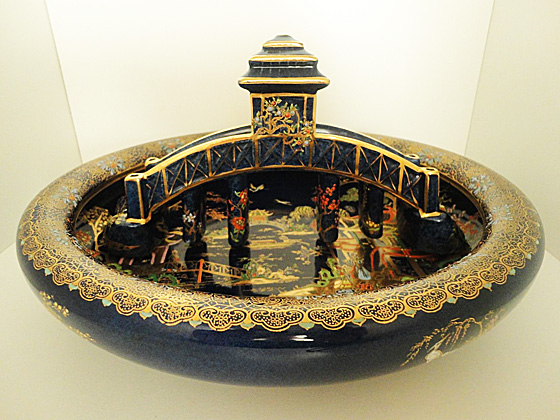
NEW MIKADO pattern No. 2728
It appears that Carlton Ware first introduced flower frogs in the early 1920s to be used with the pottery’s shallow floating flower bowls, as they were called. They were often decorated with Chinoiserie patterns and had a clever incurving rim to prevent water spillage.
Some of Carlton Ware’s flower frogs took the form of bridges with pagoda-like structures, sometimes decorated in coloured enamels and finished with gold outlining. These sat well in the centre of floating flower bowls with Oriental decorations.
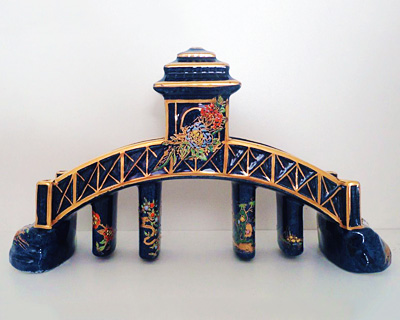
NEW MIKADO pattern No. 2728
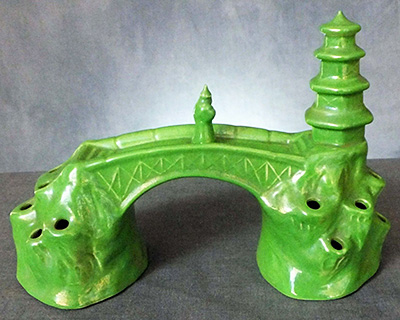
Green LUSTRINE
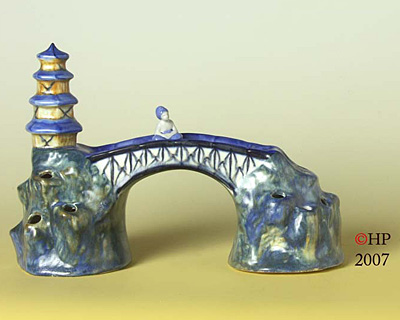
Decorated in matt glazes
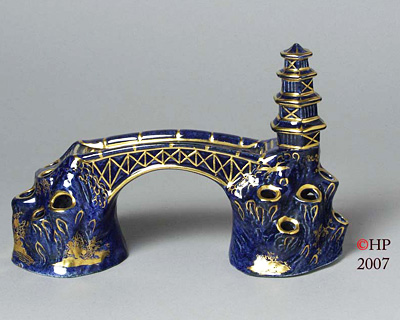
NEW MIKADO pattern No. 2729
Rocks and Tree Stumps
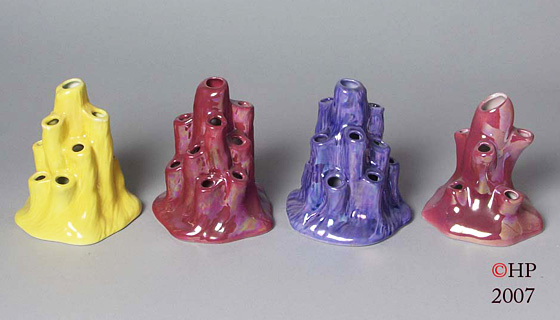
Examples in LUSTRINE
Plainer flower frogs took the form of rocks or tree stumps usually decorated in one of twelve different lustre colours. These were included in Carlton Ware‘s LUSTRINE range introduced in the early 1920s.
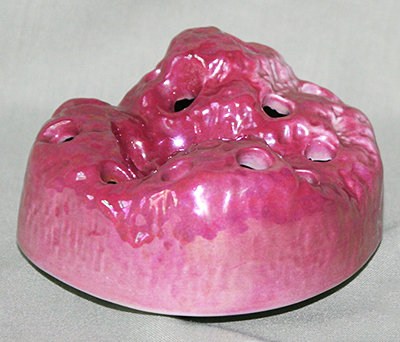
Plain Pink
Birds
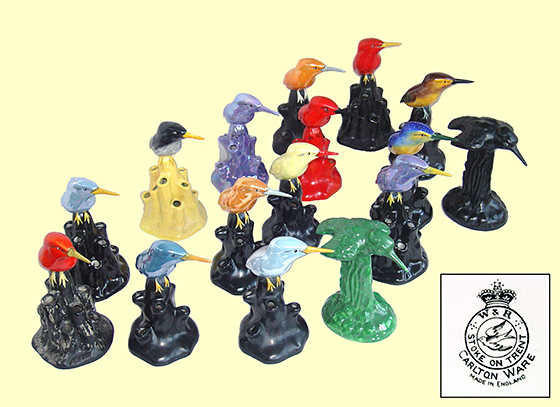
Kingfishers
More elaborate flower frogs used the same or similar rocks or tree stumps, but on which various birds perched. Sometimes the birds were realistically painted in enamel colours, but they were also available in plain and lustre colours.
Bird images courtesy of David and Veronica Macintosh and Harvey Pettit.
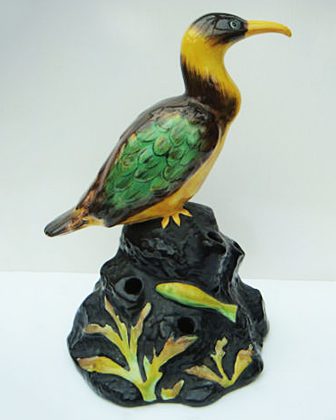
Cormorant
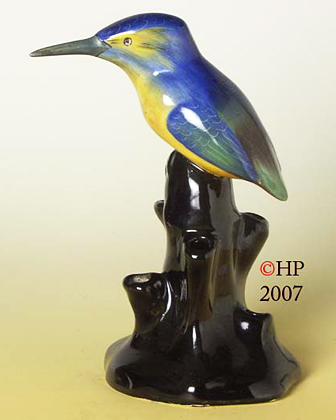
Kingfisher
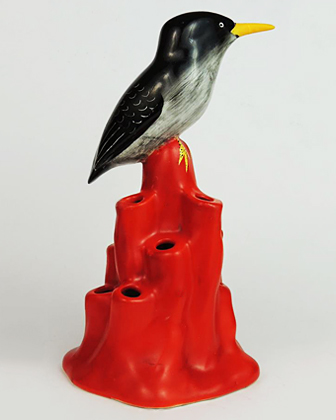
Kingfisher

Kingfisher in LUSTRINE
Domes
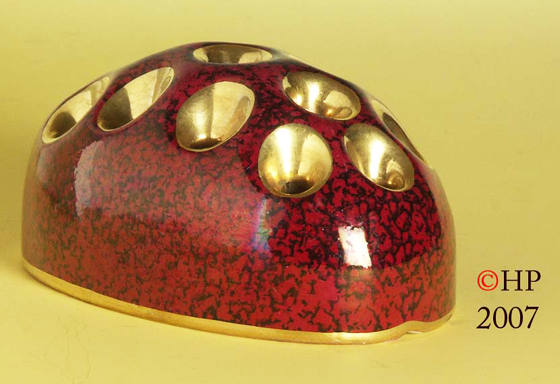
Ruby Lustre finished in gold
Carlton Ware’s simplest flower frog shape was a round or oval dome that was usually sold with a bowl with matching decorations. While the shapes were simple, they were covered in beautiful and elaborate decorations.
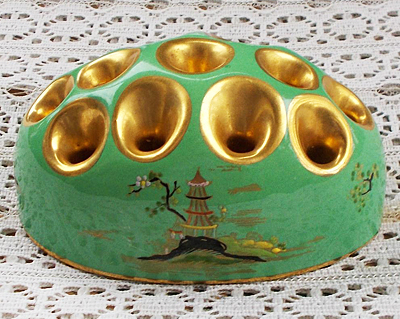
TEMPLE pattern No. 3130 [photo from web]
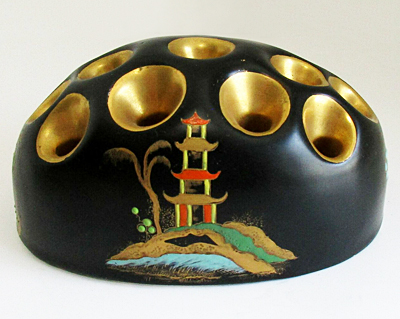
NEW MIKADO pattern No. 2881 [photo from web]

NEW MIKADO pattern No. 2728
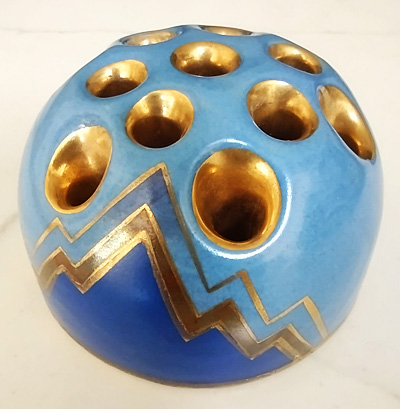
ZIG ZAG pattern No. 3356 [photo courtesy Peter Shervell]
